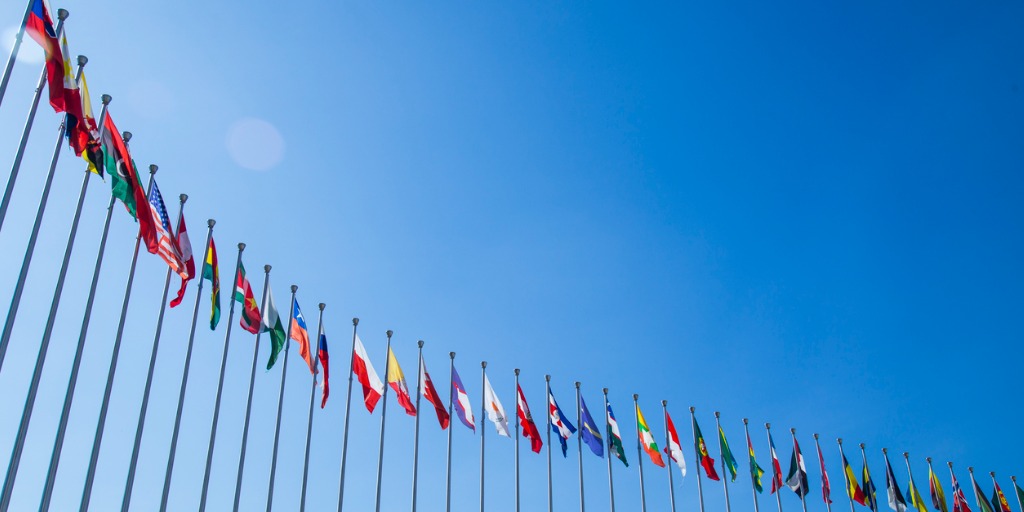Biodiversity explained: What is its impact on the finance industry?
In recent years, the focus of the environmental debate has been on climate change and the efforts to transition toward a net zero economy. However, biodiversity loss has been recognized as equally critical to the sustainability of the planet’s ecosystem and to the companies and communities that depend on it. It carries huge implications for the financial sector, both in terms of the potential financial impact, and for banks’ operational models and risk management strategies. Banks will be assessed on their role in facilitating or preventing biodiversity loss, requiring them to effectively monitor and manage the risks to ensure that their activities are aligned with their sustainability goals.
[ESG factors explained: Environmental | Social | Governance]
What is biodiversity?
Biological diversity – or biodiversity as it is colloquially known – is the measure of biological variety and the variability of life on Earth.
It is estimated that there are 10-14 million species of life, both on land and in the oceans.
But measuring biodiversity is about more than counting the number of different species.
Biodiversity is also about the ecosystems in which these species live and the interconnections between them.
This is why biologists define biodiversity as the totality of genes, species, and ecosystems in a region.
Another thing to remember is that biodiversity is not spread evenly across the globe.
Marine biodiversity for example is greatest along coastlines where the sea surface temperatures are highest such as in the Western Pacific and the oceans in the mid-latitudinal band.
Terrestrial biodiversity – or land-based biodiversity – tends to cluster in hotspots, most notably in the tropical rainforests of South America, Madagascar, India, and Indonesia.
This is due to the warmer and wetter climate of the rainforests which supports the growth of vegetation and the development of rich ecosystems.
Although these rainforests cover less than 10% of the Earth’s surface, they account for 90% of the world’s species, including 80% of amphibians, 75% of birds and 68% of mammals.
For example, Brazil’s Atlantic Forest contains an estimated 20,000 species of plant, 1,350 of vertebrates and millions of insects, around half of which occur nowhere else.
Studies have found that there are more species of ant in a single tree in the Amazon jungle than in the whole of the UK!
Colombia’s rainforests contain an estimated 10% of all species on Earth, including nearly 2,000 species of bird, more than the total number of bird species in Europe and North America combined.
Such biodiversity leads to a richer environment for us all to enjoy.

Convention on biological diversity (CBD)
Although it has not received the same amount of media attention as efforts to address climate change – notably under the Paris Climate Agreement (2015) – the protection of biodiversity has long been on the agenda of the international community.
Following the 1992 Earth Summit in Rio de Janeiro, 196 countries signed up to the Convention on Biological Diversity (CBD). This legally-binding convention commits signatory countries to develop national strategies that support:
- The conservation of biodiversity
- The sustainable use of its components
- The fair and equitable sharing of benefits arising from genetic resources
In 2010, the signatories of the CBD approved the Strategic Plan for Biodiversity 2011-2020 which aimed to promote the sustainable use of ecosystems and to reduce the causes of biodiversity loss.
The plan included the Aichi Biodiversity Targets, which comprised five strategic goals:
- Address the underlying causes of biodiversity loss by mainstreaming biodiversity across government and society.
- Reduce the direct pressures on biodiversity and promote sustainable use.
- Improve the status of biodiversity by safeguarding ecosystems, species, and genetic diversity.
- Enhance the benefits to all from biodiversity and ecosystem services.
- Enhance implementation through participatory planning, knowledge management, and capacity building.
Although the plan did have some success, many feel it failed to fully achieve its goals.
More recently, the UN has been developing a Global Biodiversity Framework. Described as the “Paris Accord for Biodiversity,” the Global Biodiversity Framework is aligned with the UN’s 2050 Vision for “Living in harmony with nature.”
The outline of the framework was adopted at the UN Biodiversity Conference (COP15) in October 2021.

Biodiversity and finance
The relationship between biodiversity and financial institutions is indirect and two-way. On the one hand, the financial sector provides finance to companies that are dependent on ecosystem services for the production of their goods and service, food producers, or clothing manufacturers, for example. And on the other hand, the financial sector also provides finance to companies that have an adverse impact on biodiversity through their production processes which result in overexploitation of ecosystems, climate change and pollution.
Managing biodiversity risk
To manage biodiversity risks and build up resilience to them, financial institutions have various instruments at their disposal. They can set lending requirements that are tied to meeting certain biodiversity targets, including the adequate monitoring and reporting of biodiversity impacts, the implementation of mitigation measures and changes to the operational model, while at the same time offering financing to support transition costs and investment.
This approach recognizes the systemically important role played by banks in the economy and how they can use their influence, for good or ill, to foster a more sustainable economy. All of the leading international banks have developed wide-ranging sustainability programs, including targets to protect biodiversity, and they are likely to give biodiversity a higher priority over the coming years.
To support the financial sector in managing the risks of biodiversity loss, a number of initiatives have been set up, such as the Taskforce on Nature-related Financial Disclosures (TNFD).
Conclusion
Biodiversity loss is one of the leading environmental issues and preventing it has become a global policy priority. Almost every company is affected by biodiversity loss, directly impacting the financial institutions that finance them to which they transmit their physical, transitional, and reputational risks.
Financial institutions have a critical role to play in protecting biodiversity, as it is the activity that they directly finance that can lead to ecosystem damage and biodiversity loss. To meet this challenge, financial institutions need to develop metrics and tools to track accurately the impact of their lending on biodiversity – both directly and indirectly – and to manage the risks as they arise. This will require a fresh assessment of how natural capital is valued, how nature risk is captured in banks’ and investor’s risk management, and how this risk is mitigated.


